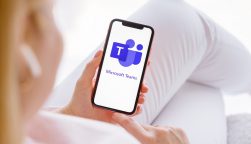Getting a job at Apple isn’t easy – not least because everyone wants one. The company is known for hiring the very best of the best into its corporate and engineering teams, with the company totaling more than 150,000 employees globally – including in-person retail teams.
Yet, despite Apple’s top brass having a stated preference for face-to-face in-office working, there are still quite a few remote jobs available at the company.
In this short guide, we’ll look at some of the most interesting roles at Apple that the company will let you complete from your home office. However, I’d advise looking at vacant roles at Microsoft if you’re serious about getting a remote job in 2024, as there are plenty more open this month.
Fully Remote Apple Jobs: Listings for March 2024
Apple has 29 remote jobs with the “home office” tag available in April 2024 – which is slightly up from last month. Although the roles are remote, they’re still linked to an office and a team, so they have geographical locations as part of the listing. Here are some of the most interesting ones I found while leafing through the careers portal:
- Apple Professional Learning Specialist (Annual Support) (Delaware, US)
- SWE – Security Engineering Manager (Kernel & System) (Cheltenham, UK)
- Systems Test Design Lead (Texas, US)
- AIML – Machine Learning Research Engineer, MLR (Hawaii, US)
- Financial Services Enterprise Account Executive (New York, USA)
- Enterprise Pre-Sales Systems Engineer (Minnesota USA)
- Merchandising Field Leader (Shanghai, China)
- Education Leadership & Learning Executive (Vancouver, Canada)
- Release Validation Engineer, Tools & Automation (California, US)
- Employee Relations Business Partner (Retail) (Washington, US)
- Cellular Data-Plane System Modeling Engineer (m/f/d) (Munich, Germany)
New remote roles keep popping up all the time at Apple, as well as other tech giants like Amazon, Meta, and Microsoft. So, if you don’t see anything that fits your skillset, don’t lose hope – the perfect role might be right around the corner!
Is Remote Working that Appealing?
As with every working arrangement, there are ups and downs. The key advantage to working from home – which is why the shift has been welcomed so much by young parents – is the added flexibility you get in your average working day.
What’s more, the amount of time you save by not commuting will be significant for many people working office jobs in big cities – if your total roundtrip is more than two hours, you’re clawing back almost 10% of your day.
However, there are benefits for people starting their careers that you get from being in an office with more senior members of staff that it’s hard to obtain naturally while working from home.
 This just in! View
This just in! View
the top business tech deals for 2025 👨💻
Those coffee machine chats really do matter, as do face-to-face feedback sessions and collaborating in person with people from all walks of life. Plus, there’s some evidence that remote employees will be overlooked for promotions.
Does Remote Working Always Have to be At Home?
No! In fact, digital nomads spend their time traveling and working, never stopping in one location for too long. This lifestyle has prompted countries all over the world, from the Caribbean to the Caucasus, to offer digital nomad visas.
They often include generous tax breaks and other benefits, as many governments are desperate for highly-paid consumers to stimulate their economies. While young remote workers may lose out on some important skills from not being tied to an office, being able to travel the world with a steady income can be a formative and valuable experience.
However, not everyone’s a globetrotter – and many people now work from coffee shops, libraries, and co-working spaces near their homes. However, difficult economic conditions lead to location decisions increasingly dominated by expenses. A recent study from the United Kingdom showed that a “Work from Pub” day is 40% cheaper than one spent in a co-working space, many of which are now beyond the average workers’ budgets.
Apple’s Return-to-Office Rollercoaster
While Apple is advertising a range of remote jobs right now, the company’s management of staff working arrangements has been far from plain sailing. In comparison to other big tech companies like Microsoft, Apple seemed very keen to get staff back into the office post-pandemic, and implemented a return-to-office mandate in 2022.
After significant backlash to the pilot and a company director resigning, CEO Tim Cook was forced to defend the decision, but pressed on with wanting to bring people back in for face-to-face work.
In early 2023, employees were threatened with disciplinary measures if they didn’t start commuting into the office. Almost two and a half years later, it’s hard to say that Apple has found the right balance – although most staff are expected to come in three days a week. But as we’ve covered, if a role is advertised as remote, you won’t be contractually obliged to do so.
Other big tech companies have taken different approaches. Microsoft – which has almost ten times as many remote roles open as Apple right now – lets all of their employees work from home 50% of the time. However, the company-wide mandate is a lot more flexible, and it’s up to managers to decide a policy for their teams and direct reports.




